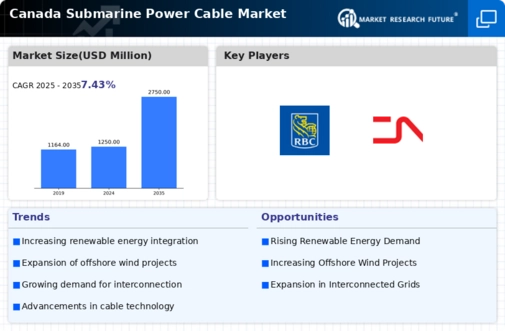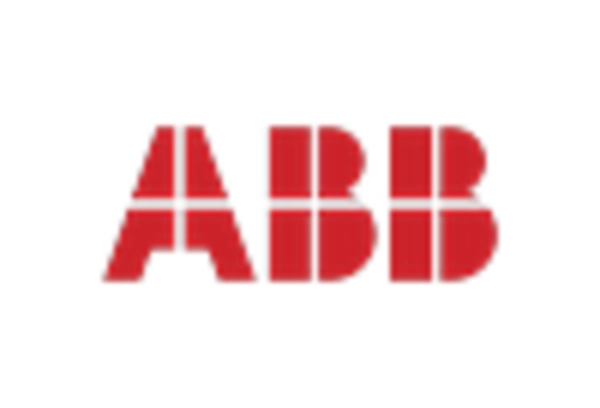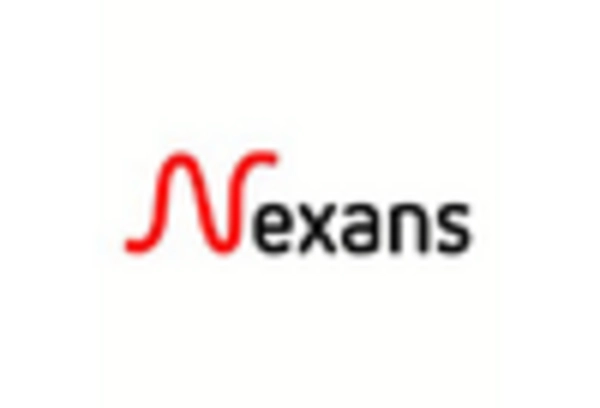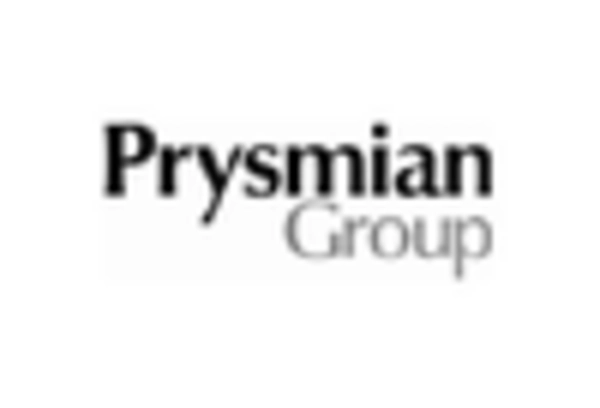The submarine power-cable market in Canada is characterized by a dynamic competitive landscape, driven by increasing demand for renewable energy sources and the expansion of offshore wind farms. Key players such as Nexans (FR), Prysmian Group (IT), and Siemens (DE) are strategically positioned to leverage these growth opportunities. Nexans (FR) focuses on innovation and sustainability, emphasizing the development of eco-friendly cable solutions. Meanwhile, Prysmian Group (IT) has been actively pursuing mergers and acquisitions to enhance its market presence and technological capabilities. Siemens (DE) is concentrating on digital transformation, integrating advanced technologies into its operations to improve efficiency and reduce costs. Collectively, these strategies contribute to a competitive environment that is increasingly focused on technological advancement and sustainability.
In terms of business tactics, companies are localizing manufacturing to reduce lead times and optimize supply chains. The market appears moderately fragmented, with several key players exerting influence over their respective segments. This fragmentation allows for a variety of competitive strategies, as companies seek to differentiate themselves through innovation and operational efficiency.
In October 2025, Nexans (FR) announced a partnership with a leading renewable energy firm to develop a new range of high-capacity submarine cables designed specifically for offshore wind projects. This collaboration is strategically significant as it positions Nexans (FR) at the forefront of the renewable energy transition, potentially increasing its market share in a rapidly growing sector. The focus on high-capacity solutions aligns with global trends towards larger offshore wind installations, indicating a proactive approach to market demands.
In September 2025, Prysmian Group (IT) completed the acquisition of a regional cable manufacturer, enhancing its production capabilities and expanding its footprint in North America. This acquisition is likely to bolster Prysmian's competitive edge by streamlining operations and increasing its ability to meet local demand. The move reflects a broader trend of consolidation within the industry, as companies seek to enhance their operational efficiencies and market reach.
In August 2025, Siemens (DE) launched a new digital platform aimed at optimizing the design and installation processes of submarine cables. This initiative is indicative of the growing importance of digitalization in the sector, as companies increasingly rely on advanced technologies to improve project outcomes. By investing in digital solutions, Siemens (DE) is not only enhancing its service offerings but also positioning itself as a leader in the integration of technology within the submarine power-cable market.
As of November 2025, current trends in the submarine power-cable market include a strong emphasis on sustainability, digitalization, and the integration of artificial intelligence (AI) into operations. Strategic alliances are becoming increasingly prevalent, as companies recognize the value of collaboration in driving innovation and enhancing competitive positioning. Looking ahead, it appears that competitive differentiation will evolve from traditional price-based competition to a focus on technological innovation, supply chain reliability, and sustainable practices. This shift may redefine the competitive landscape, compelling companies to adapt and innovate continuously.

















Leave a Comment